In the additive manufacturing world, which is changing rapidly, 3D printing with metals has opened up a new realm of possibilities in industries ranging from aerospace to automotive and medical. This blog post aims to look at various metals that can be used successfully for 3D printing by exploring their properties, benefits, and ideal use cases. In examining leading metal 3D printing materials, we will get a deep insight into how these revolutionary materials increase design freedom or productivity and address complicated engineering problems. For both experts and newcomers in metal 3D printing, this definitive guide will provide them with the necessary fundamentals of operation required within an expanding arena of metal additive manufacturing.
What Are the Commonly Used 3D Printing Metals?
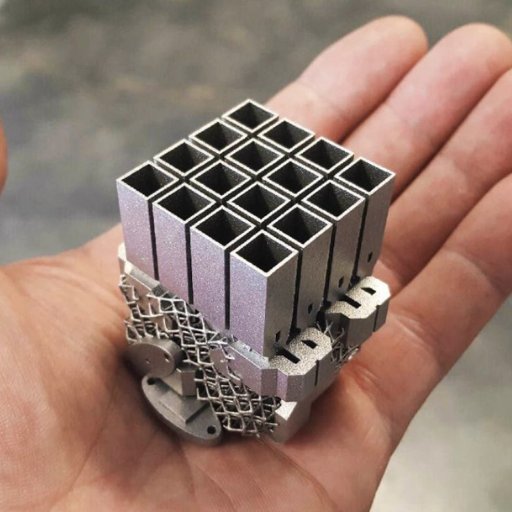
Image source: https://www.hubs.com/
Several metals are commonly used for 3D printing, each offering unique characteristics suitable for different tasks. Some major ones include:
- Stainless Steel: It is strong, corrosion resistant and has excellent mechanical features making it widely used in automotive and aerospace parts.
- Aluminum: This material is lightweight and robust, so it is favored for applications requiring a high strength-to-weight ratio, such as those in the aerospace industry.
- Titanium: Its durability, lightness, and corrosion resistance have made it a common element in medical implants and aerospace parts requiring high performance.
- Bronze: It is used for artistic work where fine finish is necessary and also in complex components that require excellent machinability and wear resistance.
These metals are paving the way for cutting-edge designs and applications across different sectors, making them significant materials for 3D printing metal.
Which Metal Alloys Are Popular in 3D Printing?
In 3D printing, some metal alloys are more versatile and perform exceptionally well than others. The following are some of the most popular:
- Aluminium Alloys (e.g., AlSi10Mg): These aluminum alloys have good mechanical properties and low weights, which makes them widely used in aerospace applications and automotive sectors, particularly in parts where high strength-to-weight ratios are needed.
- Titanium Alloys (e.g., Ti6Al4V): In industries such as aerospace or medical device manufacture, where high strength, lightness, and resistance to corrosion are required for structural purposes or implantable products, this alloy has carved out a niche for itself.
- Stainless Steel Alloys (e.g., 316L): These stainless steel alloys are popularly used in industrial settings due to their excellent strength, ductility, and corrosion resistance capability; hence, durable machine components can be manufactured from them.
The advantages inherent in these metals help meet specific engineering needs and advance various fields that rely on 3D printing technology.
What Are the Properties of Stainless Steel for 3D Printing?
Some essential characteristics come to mind when I think about 3D printing with stainless steel. First and foremost, it is an optimum material for creating vital parts capable of taking hefty loads and stresses due to its incredible strength and toughness. Moreover, stainless steel possesses remarkable resistance against corrosion, which makes it possible for parts to maintain their properties in different environments, including exposure to humidity and chemicals. Furthermore, its ability to be machined and processed after manufacture has facilitated precise finishing techniques and the production of complex designs. Finally, within this context, I like how it maintains dimensional accuracy during the build process because of its thermal stability, leading to high-quality outputs that meet specific manufacturing requirements.
How Does Titanium Perform in Additive Manufacturing?
The use of additive manufacturing in the aerospace and medical industries has grown to the extent that titanium is increasingly being acknowledged for its capability to enhance it. A great merit of titanium is its high weight-to-strength ratio, which helps produce tough but light components. It is also important to note that titanium performs well even in challenging circumstances due to its excellent corrosion resistance. Furthermore, this material has superior thermal characteristics that favor selective laser melting (SLM) and electron beam melting (EBM) since it allows a high degree of control over the production environment. However, there are several challenges such as reactivity during processing and high costs as compared with those associated with other metals which one needs to keep in mind. Incorporating such issues, Titanium presents immense possibilities for the above-mentioned engineering domain by pushing up design limitations, thus enhancing functionality.
What Is the 3D Printing Process for Metals?
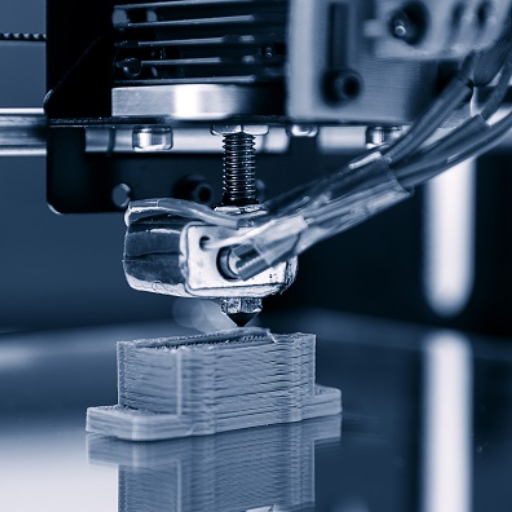
Creating a digital model using computer-aided design (CAD) software is one of the initial steps in the 3D printing process for metals. The actual process begins after creating the model with either powder bed fusion or direct energy deposition methods. A laser or electron beam selectively melts a thin layer of metal powder spread across a build platform in powder bed fusion, which then forms the desired shape. This is done by repeating this process layer by layer until the final part is completed. On the other hand, direct energy deposition systems employ focused energy sources to melt metal wire or powder while being deposited, thus enabling the repair and addition of material to pre-existing components. Parts are often subjected to post-processing treatments after printing, such as heat or surface finishing, for better mechanical properties and surface quality. Unlike traditional manufacturing techniques, this innovative method allows for hard-to-make complex geometries and custom-made parts.
What Are the Steps Involved in Metal Powder Printing?
The typical way of metal powder printing includes the following stages:
- Preparation of the CAD Model: It all starts with creating an elaborate digital model using computer-aided design (CAD) software. The model serves as a final printed part’s blueprint.
- Slicing the Model: In this state, the CAD model is converted into multiple layers, which the printer uses to make the part layer by layer. This slicing software translates the model into machine instructions.
- Layering Metal Powder: A thin layer of metal powder is spread out on top of the build platform. Different from other powders, it can be made from various metal alloys, such as titanium or steel, which are selected based on the desired properties for the final part.
- Melting with Energy Source: A narrowed-down beam emanating from a laser or electron beam selectively melts only specific powder areas according to sliced models. This fusing process occurs through selective melting, forming the initial parts layer.
- Repeating the Process: A new layer is laid upon completion of the first one, after which the melting process is redone repeatedly. Thus, it continues until the whole object is built one layer after another.
- Cooling and Elimination: After printing, the build chamber is cooled. Next, the printed metal part is detached from the building platform.
- Post-Processing: Finally, it undergoes post-processing procedures such as heat treatment, finishing, or machining to improve its mechanical properties and surface quality so that it meets specified standards.
This way, it can produce complex geometries and intricate designs that are difficult to achieve through conventional manufacturing methods.
How Does Selective Laser Sintering Work for Metal Parts?
Selective Laser Sintering (SLS) consists of critical steps leading to successful metal part creation. In this regard, I prepare a CAD model, which is then sliced into layers using software designed specifically for this purpose. Additionally, I spread a thin layer of metal powder across the entire build platform, being selective about one with particular features. By activating the laser beam on these areas, as I outlined, the powder within them fuses together, thus forming the desired shape layer by layer. When making an object, it cools down before being removed carefully, and any subsequent process is required to improve its strength and finish. This method enables me to make very intricate and highly complicated forms, which are often not feasible in traditional ways.
What Equipment Is Required for Metal 3D Printing?
To do metal 3D printing effectively, you need the following:
- A 3D Printer: The leading equipment, for example, a Selective Laser Sintering (SLS) or Direct Metal Laser Sintering (DMLS) printer, combines metal powder using a laser.
- Powder Feed System: This entails machines that ensure the accurate deposition of metal powder during the printing process, thereby attaining uniformity in coating and consistent layer thickness.
- Laser System: Heat fusion via laser systems is necessary to fabricate objects with high precision.
- Build Platform: A strong base for the printed part that often has temperature regulation is valuable when achieving desired material properties.
- Post-Processing Tools: Other necessary machines include heat treatment furnaces and surface finishing tools, which are used to alter the end product’s mechanical features and appearance.
- Computer-Aided Design (CAD) Software: Necessary for creating and editing 3D models before they are sliced into printable layers.
- Safety Equipment: Personal protective equipment such as gloves, goggles, and dust masks is important when handling metal powders or operating machinery.
These parts all cooperate to make metal 3D printing’s intricate and complicated processes possible, enabling the production of delicate and high-quality items.
What Are the Advantages of Metal 3D Printing?
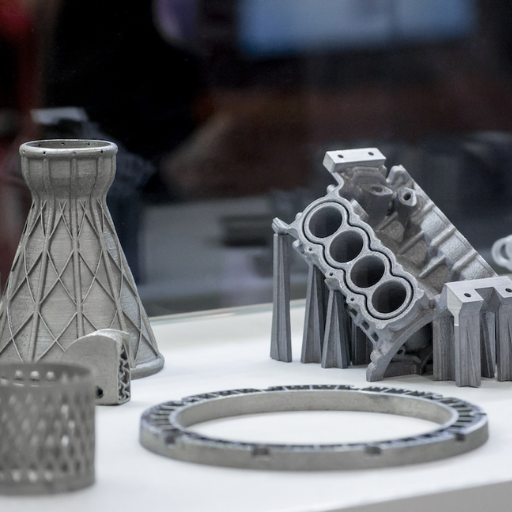
Metal 3D printing is a highly sought-after technique in many areas due to its advantages. To begin with, it can be utilized to create complex geometries that are usually impossible to achieve using traditional manufacturing methods, thus promoting design freedom and innovation. In addition, the process typically produces less material waste since only as much powder as necessary is used for printing. Moreover, rapid prototype enabling reduces the time to make parts, reducing product development cycle times. Furthermore, on-demand production helps bring manufacturing closer to point-of-use while cutting inventory costs. Lastly, lightweight but strong components can be created to enhance efficiency and performance in aerospace or automotive applications. In conclusion, these particles work together for this purpose; bond creation, gas formation, mass transfer, exothermic reaction, and endothermic reaction.
How Does 3D Printing Compare to Conventional Manufacturing?
In contrast to conventional manufacturing techniques, 3D printing, also known as additive manufacturing, is a method of creating three-dimensional objects by adding successive layers. One major distinction lies in the flexibility of design; it allows for easy alteration of models without the high cost of acquiring new tools or machines and, therefore, suits small-scale production runs and customized parts. Furthermore, whereas traditional methods are limited by materials and tooling, 3D printing supports complex geometries that are difficult or impossible to produce through conventional means.
It is also material efficient since it builds up material layer by layer instead of cutting away from a giant block, thus reducing waste. Nevertheless, when making large quantities, traditional manufacturing might be more cost-effective due to established channels of distribution and economies of scale that result in low per-unit costs. Finally, prototyping and small batch production have shorter lead times in 3D printing, promoting quicker product development and innovation. It ultimately comes down to choices based on requirements such as complexity, quantity, or budget if one opts for either fabrication: 3D printing or traditional manufacturing.
What Are the Benefits of Using Aluminum in 3D Printing?
Using aluminum in 3D printing has several advantages that I have found to significantly improve performance and functionality. Firstly, it is lightweight yet solid, making it suitable for applications where weight reduction is crucial, such as in the aerospace and automotive sectors. Secondly, it has excellent thermal conductivity, allowing efficient heat dissipation, an added advantage in parts operating under high-temperature environments. Again, Aluminum 3D-printed components are highly corrosion-resistant, increasing the product’s lifespan. Lastly, its versatility allows for intricate geometries that would otherwise be impossible using traditional techniques, thus commonality with the elastic nature of 3D printing. Generally, promising designs can be created by including aluminum as part of 3D printing processes, leading to more robust products explicitly customized for individual projects.
Why Is Corrosion Resistance Important for Metal Parts?
In metal parts, the corrosion resistance is of great importance due to its direct influence on how strong and long-lasting different components used in various industries will be. Some sources from reputable websites say that corrosion is capable of causing severe damage to materials, which can undermine the structure of items, making them fail and require costly repairs. Furthermore, corrosion can interfere with the functionality and dependability of metal parts widely used in space, the automobile industry, and shipping, where safety comes first. In addition, investing in corrosive-resistant materials reduces maintenance costs, leading to reduced downtime time, improving operational efficiencies, and ensuring a longer product life cycle. In summary, maintaining performance standards while considering safety and economic considerations requires protection against corrosion in the metals’ industrial production system.
What Are the Applications of 3D Printed Metal Parts?
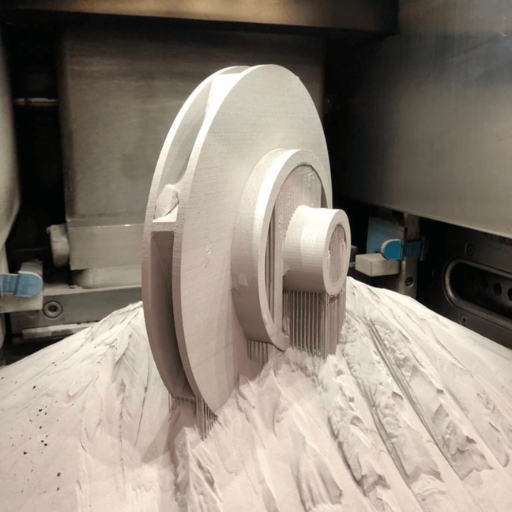
The use of 3D-printed metallic parts is growing unprecedentedly in many industries due to their unique characteristics and design capabilities. The aerospace industry makes lightweight, high-strength elements that enhance fuel efficiency and performance. The automotive sector uses 3D printing for metal for prototyping and producing complex geometries, improving vehicle performance and aesthetics. On the other hand, medical applications involve the fabrication of custom implants and surgical instruments designed to meet individual patient requirements. Other areas worth mentioning include energy, where 3D printing produces robust components for turbines and equipment exposed to harsh environments. As a result, traditional techniques are being revolutionized by the adaptability and efficiency of metal manufacturing through 3D printing across various fields altogether.
How Is Metal 3D Printing Used in Aerospace?
By enabling the production of complex lightweight components that drive innovation and efficiency, metal 3D printing is revolutionizing the aerospace industry. The leading aerospace companies are known to use additive manufacturing methods in making parts that may not be achieved using traditional techniques, such as reducing weight while maintaining strength like intricate lattice structures. This creates room for rapid prototyping and iteration, significantly shortening development timelines. Furthermore, on-demand customization enables reduced inventory costs and lead times, thus creating a competitive edge. Applications include essential parts such as fuel nozzles, brackets, and structural frames, which result in better performance and less waste material, supporting sustainability across this industry.
What Role Does Metal Printing Play in the Automotive Industry?
While researching metal printing in automotive, I realized it is a critical tool for improving design and manufacturing processes. This technique enables the manufacturing of lightweight yet durable parts, leading to better fuel efficiency and performance. It has been observed that leading automakers are employing this technology for prototyping purposes and production involving engine components, brackets, and many other parts, which are intricate and tailored to meet specific requirements. The transformation facilitates faster changes and makes production leaner while lowering wastage and updating the ability to match dynamic market forces. Consequently, metal printing acts as an instrument for automotive manufacturers to foster sustainable development besides enhancing product quality.
Where Are 3D Metal Parts Commonly Utilized?
Various sectors, including aerospace, automotive, and medicine, use 3D metal parts widely. Within the aerospace industry, lightweight brackets, turbine parts, and customized tooling are printed to improve performance and weight reduction and enhance fuel efficiency. In the auto industry, manufacturers use metal printing to make complex engine parts and customized fixtures, allowing for fast prototyping and reduced lead times. On the other hand, personalizing implants and surgical equipment specific to patient needs in the medical industry improves comfort and functionality. These examples of applications show how practical and versatile 3D metal printing can be when applied to distinct challenges present in these industries.
How to Choose the Best Metal for 3D Printing?
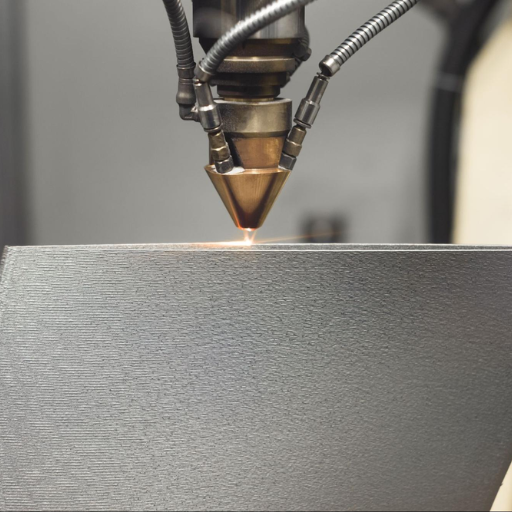
To choose the perfect metal for 3D printing, you have to look at some factors that align with your project’s needs. Firstly, consider the mechanical properties your application requires, such as strength, malleability, and heat resistance. This includes commonly used metals such as stainless steel, titanium, and aluminum, which possess different qualities suitable for other purposes. Secondly, the printing process should be considered because some metals are better suited to particular technologies like direct metal laser sintering (DMLS) or electron beam melting (EBM). In addition, the post-processing capabilities should be analyzed since some types of metals may need additional treatments to obtain desired surface finishes or mechanical properties. Lastly, factor in cost and availability so that your selection for a metal is within your budget and supply chain logistics. By carefully discussing these considerations, you can find what material will work best out of others for 3D printing purposes.
What Factors Should Be Considered When Selecting Metal Materials?
In the process of selecting metal materials for 3D printing, several critical factors have to be considered.
- Mechanical Properties: Look at the necessary mechanical properties, including tensile strength, fatigue resistance, and corrosion resistance, to ascertain that the metal can withstand an application’s operational demands.
- Compatibility with Printing Technology: Different 3D printing technologies are compatible with metal materials. It is crucial to select metals optimized for processes like DMLS, EBM, or Binder Jetting because this significantly affects print quality and cost-effectiveness.
- Post-Processing Requirements: Post-processing requirements should be considered to ensure the desired surface finish and mechanical attributes. Some metals may need additional steps, such as heat treatment or surface polishing, to meet certain standards.
- Cost and Availability: Lastly, account for budgetary allocation and availability of the chosen metal. Sourcing costs and lead times can differ widely, affecting project timelines and overall expenses.
Taking these factors into account will allow you to make a sound decision that meets both technical requirements and financial implications.
How Do Material Properties Affect the 3D Printing Process?
I have observed that the properties of a chosen material can highly affect the entire 3D printing process, from the initial design to the final product. For example, materials with higher tensile strength are responsible for the production of solid and robust parts, which is very important in functional applications. In contrast, materials with low thermal conductivity tend to reduce warping and deformation during printing, improving dimensional accuracy. Furthermore, material flow characteristics and viscosity can dictate deposition speed and layer adherence in Fused Deposition Modeling (FDM) processes. Eventually, knowing how these properties combine with the chosen printing technology helps me fine-tune my designs and get the best possible performance and finish outcomes.
What Are the Most Effective Metal 3D Printing Technologies?
Metal 3D printing technologies have advanced greatly, and some of them are more useful in manufacturing high-quality metal parts.
- Selective Laser Melting (SLM): This technique uses high beam power to selectively fuse powdered metals layer by layer through melting. The technology provides room for intricate geometries and dense parts, making it suitable for aerospace and medical applications. SLM has high precision, which contributes to mechanical properties and finishing.
- Electron Beam Melting (EBM): EBM uses an electron beam in a vacuum to melt metal powder, producing fully dense components. It is ideal for high-performance applications like aerospace industries and implants, where it can process materials such as titanium at high temperatures. The build rate of EBM is usually higher than that of SLMs; hence, it is more appropriate for more significant parts.
- Binder Jetting: Unlike the melting methods, Binder Jetting depends on a liquid binding agent to melt together layers of metallic powders, after which final density may be achieved via sintering. For instance, this approach may be faster or cheaper than many copies of the same thing. However, any extra post-processing might be necessary to improve mechanical properties or finishing touches on the surface of the objects made out of it. Regarding prototyping and low-volume production, Binder Jetting is an excellent choice.
Metal additive manufacturing has various advantages, and hence, the process of choosing among AM technologies differs based on specific requirements of material properties and desired outcomes for 3D-printed metal components.
What Innovations Are Emerging in Metal 3D Printing?
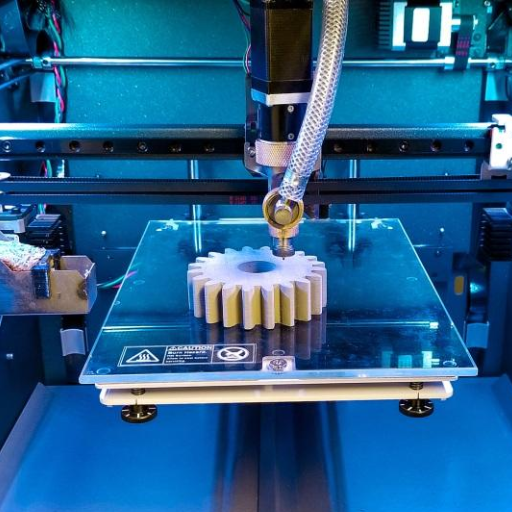
Emerging technology developments in the 3D printing of metals aim to improve efficiency, material versatility, and part performance. One significant advancement is the creation of hybrid systems that combine additive and subtractive manufacturing methods, thereby allowing complex geometries with tight tolerances. Additionally, progress in powder metallurgy produces new materials with enhanced characteristics, such as lightweight alloys or high-strength steels. Moreover, artificial intelligence (AI) and machine learning (ML) are increasingly used to optimize print parameters and improve the quality control of parts made during printing. These inventions open up broader applications in areas like the automotive industry, aerospace manufacturing, or the healthcare sector, thereby extending the limits of metal 3D printing.
What Are the Trends in Metal Additive Manufacturing?
The future of metal additive manufacturing is influenced by several key trends. To begin with, there is a shift towards lightweight materials such as titanium and aluminum alloys that are being used due to their high strength-to-weight ratios in areas like the aircraft industry or the automotive sector. Furthermore, there is a rising number of integrated advanced software tools for design and simulation, which help optimize components to reduce material waste and boost performance. Lastly, sustainability is another focus area characterized by closed-loop systems wherein manufacturers recycle metallic powders that save energy, thereby minimizing the heat needed when printing occurs. As a result thereof, these changes collectively mark a progressive development in metal additive manufacturing, culminating in more efficient, environment-friendly, and high-performance production processes.
How Is Direct Metal Laser Sintering Evolving?
With technological advancements and materials, Direct Metal Laser Sintering (DMLS) is undergoing a marked transformation. From my studies, one of the most remarkable developments in this field has been the improvement in laser systems that are becoming more powerful and efficient, thus enabling faster build times and better resolution in layer bonding. Furthermore, a wide variety of metal powders has been available, which will allow broader applications across industries, especially aerospace and healthcare. Post-processing techniques have also improved, leading to better surface finishes and dimensional accuracy of parts. Also, there is increasing attention on fusing DMLS with digital manufacturing processes, simplifying workflow, and improving production repeatability. In general, efficiency, the versatility of the material, and enhanced performance have defined DMLS’s churning into a pivotal technology within the additive manufacturing domain.
What Future Metals Could Be Used in 3D Printing?
Existing research and development of metal additive manufacturing have moved forward to indicate several metals that could play a role in future 3D printing exercises. Importantly these include
- Titanium Alloys: Titanium alloys are already used for aerospace and medical implants because they have a good strength-to-weight ratio and corrosion resistance. New developments could encourage the use of cost-effective and versatile titanium alloys across a broader range of applications.
- Cobalt-Chromium Alloys: The hardness and wear resistance of cobalt-chromium alloys in dental and orthopedic applications are being tested. Advancements in powder production may make them more useful in high-performance components.
- Aluminum Alloys: Aluminium alloys are gaining ground in the automotive and aerospace sectors due to their lightweight nature and good mechanical properties. Further studies may concentrate on improving their printability and properties when subjected to DMLS or other additive processes.
As such, these metals, including the latest advances in metal powder technology, will bring about more opportunities within metal 3D printing for light, more substantial, resilient parts required by different industries.
Frequently Asked Questions (FAQs)
Q: What types of metals can be used in 3D metal printing?
A: Many metals and metal alloys can be used for 3D printing, including tools and stainless steel, such as 17-4 PH stainless steel, cobalt, cobalt chrome, and titanium.
Q: How does the printing process for metal 3D printing work?
A: The metal 3D printing process involves using a metal 3D printer that deposits layers of metal particles or metal filaments to build parts. Direct metal printing methods, such as Selective Laser Melting (SLM) or Electron Beam Melting (EBM), are commonly used.
Q: Can precious metals be 3D printed?
A: Precious metals such as gold and silver can be used to manufacture items through 3D metal printing, making them suitable for jewelry and other luxury items.
Q: What is tool steel, and is it suitable for 3D printing?
A: Tool steel is a type of steel that is particularly hard and resistant to wear. It is often used to produce metal parts and is suitable for 3D printing due to its strength and durability.
Q: What are the advantages of using metals for 3D printing?
A: 3D printing’s flexibility allows for intricate designs and complex geometries that may be difficult or impossible to achieve with traditional manufacturing methods. 3D-printed metals are often lighter and more robust than their conventionally manufactured counterparts.
Q: Are there specific materials for 3D printing that are more popular than others?
A: Yes, some common 3D-printed materials include stainless steel, titanium, and tool steel, which are favored for their mechanical properties and versatility in applications.
Q: What is the difference between metal filaments and metal powders in 3D printing?
A: Metal filaments are typically composite materials that combine metal particles with a polymer base, suitable for FDM printing. Metal powders, on the other hand, are used in processes like SLM and EBM for direct metal printing, allowing for more complex shapes and finishes.
Q: What considerations should be made when choosing a metal for 3D printing?
A: Factors to consider include the mechanical properties desired for the final product, the printing method being used, the compatibility of the metal with the 3D printer, and the intended application of the printed parts.
Q: Is 3D-printed titanium as strong as traditionally manufactured titanium?
A: 3D printed titanium can achieve comparable strength to traditionally manufactured titanium, but the exact properties depend on the specific printing process and parameters used during the metal 3D printing.









